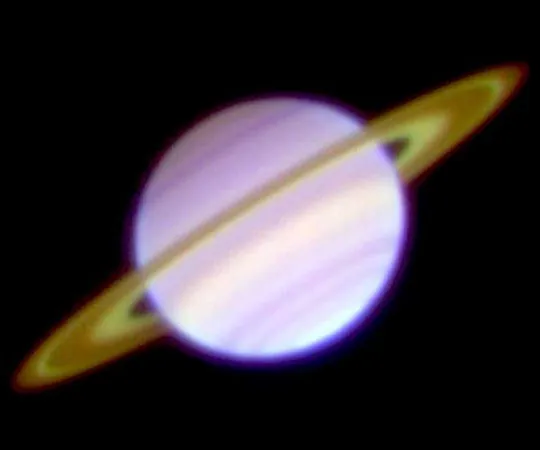
Breakthrough Discovery: A Rare Gas Giant Exoplanet Found Through Global Citizen Science
2025-06-26
Author: Nur
A New Star in the Cosmos: Introducing TOI-4465 b
In an extraordinary collaboration, astronomers from The University of New Mexico have unveiled a breathtaking new gas giant exoplanet, dubbed TOI-4465 b, located a staggering 400 light-years from Earth. This cutting-edge discovery showcases the potential of citizen science, as it was made possible through the concerted efforts of astronomy enthusiasts worldwide.
The Journey to Confirmation: A Tale of Coordination and Dedication
TOI-4465 b was initially spotted by NASA’s Transiting Exoplanet Survey Satellite (TESS) during a rare single-transit event. However, confirming its existence proved challenging due to its lengthy 102-day orbital period, demanding uninterrupted observations.
Postdoctoral Fellow Zahra Essack explained the challenges faced: "Each transit lasts about 12 hours, but achieving 12 consecutive hours of clear, dark skies is a rarity. Factors like weather and telescope availability made this quest even tougher."
Citizen Scientists to the Rescue!
To tackle these hurdles, an international team of 24 citizen scientists from 10 different countries joined forces with professional observatories. Armed with their personal telescopes, these dedicated participants captured crucial photometric data by monitoring the brightness dips as TOI-4465 b passed in front of its star.
Essack praised the involvement of citizen scientists, stating: "This discovery shows how passionate astronomy enthusiasts can directly contribute to pioneering scientific research."
The Exoplanet's Unique Characteristics
TOI-4465 b is an impressive 25% larger than Jupiter, nearly six times its mass, and boasts a density almost three times greater. Its mildly elliptical orbit results in surface temperatures ranging between 375 to 478 K (200-400 F), placing it in a unique temperate zone among known exoplanets.
The Significance of Long-Period Exoplanets
This groundbreaking discovery underscores the need for further exploration of long-period exoplanets, which have orbital durations exceeding 100 days. These planets are rare and hold key insights into planetary formation and evolution under more temperate conditions.
A Future Full of Potential
With its distinct properties, TOI-4465 b stands out as a prime candidate for future atmospheric studies, particularly with the James Webb Space Telescope (JWST). The potential for emission spectroscopy could unveil the chemical makeup of this enigmatic exoplanet.
As we continue to explore the cosmos, the role of citizen scientists becomes ever more pivotal, proving that together we can reach for the stars!

 Brasil (PT)
Brasil (PT)
 Canada (EN)
Canada (EN)
 Chile (ES)
Chile (ES)
 Česko (CS)
Česko (CS)
 대한민국 (KO)
대한민국 (KO)
 España (ES)
España (ES)
 France (FR)
France (FR)
 Hong Kong (EN)
Hong Kong (EN)
 Italia (IT)
Italia (IT)
 日本 (JA)
日本 (JA)
 Magyarország (HU)
Magyarország (HU)
 Norge (NO)
Norge (NO)
 Polska (PL)
Polska (PL)
 Schweiz (DE)
Schweiz (DE)
 Singapore (EN)
Singapore (EN)
 Sverige (SV)
Sverige (SV)
 Suomi (FI)
Suomi (FI)
 Türkiye (TR)
Türkiye (TR)
 الإمارات العربية المتحدة (AR)
الإمارات العربية المتحدة (AR)